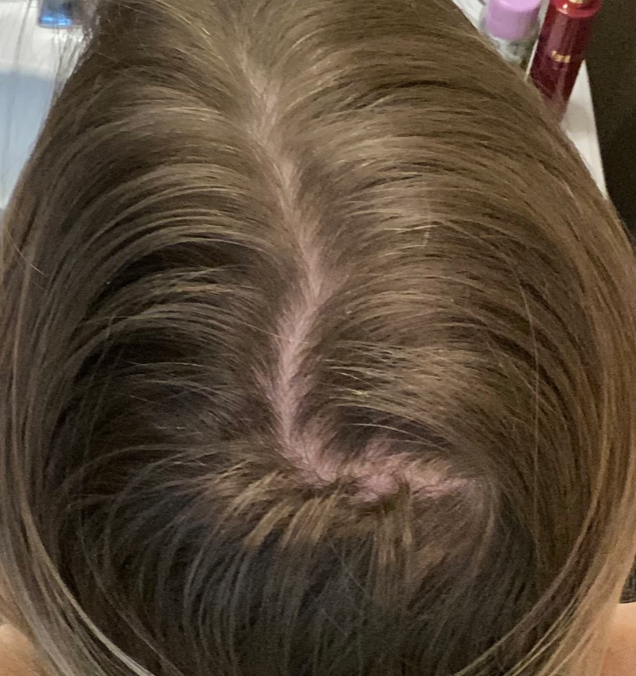ANSWER
Thanks for the question.
I’d like to discuss several important things in the question you ask and the information you have submitted.
Before we do go further, I’d like to point out that the ideal way to diagnose hair loss is using what I termed the ”Diagnostic S.E.T.” I refer to these as the diagnostic “set” because theses 3 aspects all go together. These 3 items include:
1) the patient’s story
2) the findings uncovered during the process of the scalp examination including trichoscopy
3) the results of relevant blood tests.
The first letter of each of the three words 1) story, 2) examination and 3) tests spell out the word “S.E.T.” - again a helpful reminder of how the information obtained from reviewing each of these 3 aspects helps solidify a proper diagnosis.
The key question here in your case is whether or not you have androgenetic alopecia. The only way I can really confidently determine that is with an up close examination (or review the results or a biopsy which you have not had). So, I cannot yet say whether you have androgenetic alopecia or not.
Let’s go further into your story.
You are correct that some of these things you mention like moving to a new town and having surgery could trigger TE, but the timing is a bit off. Having a breast augmentation in summer 2019 causes shedding in the late fall not way into March of 2020. So this is unlikely linked especially since the shedding in Oct 2020 is pretty much the same. . Furthermore you still kept shedding in October and now into January 2021. Those events of 2019 are probably not all that close related.
There are a few possibilities for what’s going on:
a) you have androgenetic alopecia
b) you have telogen effluvium and nobody has found the cause
c) you have another diagnosis altogether.
Let’s take a look at these…..
a) Do you have androgenetic alopecia ?
It’s possible you have androgenetic alopecia. I would like to point out that AGA most certainly is a ‘hair shedding’ diagnosis so don’t let that confuse you. Women with early AGA experience increased shedding. It is incorrect to link that because you have shedding you are looking for some list of hair shedding causes for which androgenetic alopecia is not on the list. It’s on the list. You have persistent shedding despite fairly normal blood tests for typical triggers of telogen effluvium. You are seeing your crown and mid scalp more visible in bright lights. What’s the most common reason for this? Androgenetic alopecia.
We don’t diagnose AGA by blood tests. Having a high DHEAS or free T does not mean you have AGA. No way. If you have a variation in the caliber of your hairs when your scalp is examined up close with trichsoscopy, that is suggestive of AGA. Or if you have a terminal to vellus ratio of less than 4:1 if you ever did a biopsy that would be suggestive of AGA. I have many patients with elevated DHEAS who don’t have AGA!!!! So that’s not the key point that its going to nail down the diagnosis. A proper scalp exam (or biopsy) is!
I do think it’s really important for anyone with elevated androgen hormones to figure out if there is any underlying condition that can give a slightly elevated DHEAS or Free T. Some women with PCOS have elevated androgens and some women with late onset congenital adrenal hyperplasia (CAH) have elevated androgens. It’s going to be very important for your physicians to understand whether or not your periods are regular or not and whether any of these diagnoses might be present. If you have irregular periods you’ll want speak with your dermatologist about having an extended panel of blood tests the 3rd to 5th day of your menstrual cycle. (These tests need to be done off all oral medications). Your DHEAS is not high enough to worry about adrenal gland tumors in case that’s something you have read about yourself. It’s only slightly elevated. But even though you think you’ve had all the blood tests you need, it’s important to keep in mind you might not have. For some women with increased DHEAS, a compressive blood test panel includes TSH, prolactin, AM cortisol and 17 hydroxprogesterone. Again this should be done on day 3-5 of the cycle.
b) Do you have telogen effluvium and nobody has found the cause?
There are hundreds of reasons to shed hair. The common causes are stress, low iron, thyroid problems, medications, diets, etc. But there are so many other causes too - and it’s going to be important for your doctors to ask you oodles of questions to make sure you don’t have another cases. I can’t go into all the questions because there are so many but it’s essentially a head to toe understanding if there are concerns. With a ferritin of 48, I don’t think it’s likely that iron is an issue here at all. A ferritin of 48 is not associated with hair shedding issues for 99 % of people.
For persistant shedding in a patient with NORMAL basic blood tests, we want to know 1) does this patient have an autoimmune disease Iike lupus ? or another autoimmune disease? 2) is there an infectious disease present (syphilis, COVID, lyme)? 3) does the person have gastrointestinal disease affecting absorption of micronutrients ? 4) is there a supplement or drug the patient is using? If there are other features present like fatigue, headaches, muscle pain, poor sleep, depression then you are your doctors may need to review the concept of breast implant illness. It’s a rare consideration for hair shedding but certainly part of a comprehensive approach to investigation of the cause of your hair loss. The answers to these questions will influence whether blood tests like ANA, RPR, zinc, Sars-COV-2 antibodies and others get ordered. The panel of blood tests can be quite large but the specific tests to order depend on the answer you give to a lot of detailed questions.
CTE is misdiagnosed often and this is not something you likely have. CTE is a condition of women 35- 70 with chronic shedding for no good reason. That’s the key to CTE. It’s not just shedding that goes on and on without figuring out common causes. If you have androgenetic alopecia in the end, then your shedding is from AGA most likely. Your story is not a typical CTE story! The diagnosis fo CTE gets thrown out way too easily in my opinion. You either have an acute telogen effluvium that nobody has found that diagnosis to, or you have androgenic alopecia or you have another diagnosis altogether that has been missed. I would favour that you have AGA.
c) Do you have another diagnosis altogether?
I don’t have all your story information … but I would imagine that a lot of other answers would be negative. I’m assuming that if you did have scalp itching or burning you’d include it in your question. I would imagine if your scalp was tender you’d include that too. But maybe not. We have to be open to the possibility that autoimmune diseases like lichen planopilaris could be present and give chronic shedding. I would highly doubt it though as LPP s not something that I see in your scalp based on the one photo I have.
Summary.
Thanks again for submitting your question. I would need to see your scalp up close to guide you further. It’s the scalp examination that is going to help figure out if you have AGA not the blood tests. We don’t diagnose hair loss from blood tests! If you have miniaturization of follicles on examination then you likely have AGA. Or if you get a biopsy and if captures the miniaturization in the biopsy (with a terminal to velds ratio less than 4:1) you likely have AGA.
Not everyone needs a scalp biopsy but it’s helpful if there s doubt from anyone - patient or doctor.
If you have AGA, minoxidil, spironolactone, laser, and PRP are options. If you have AGA with elevated androgens and have no other underlying endocrine issues spironolactone can be a good option. You are correct that spironolactone can have side effects. Fortunately, most side effects are mild and less than 4 % of users actually stop spironolactone due to side effects. But people who do not wish to use spironolactone can consider laser, PRP, topical minoxidil, oral minoxidil and other treatments too.


